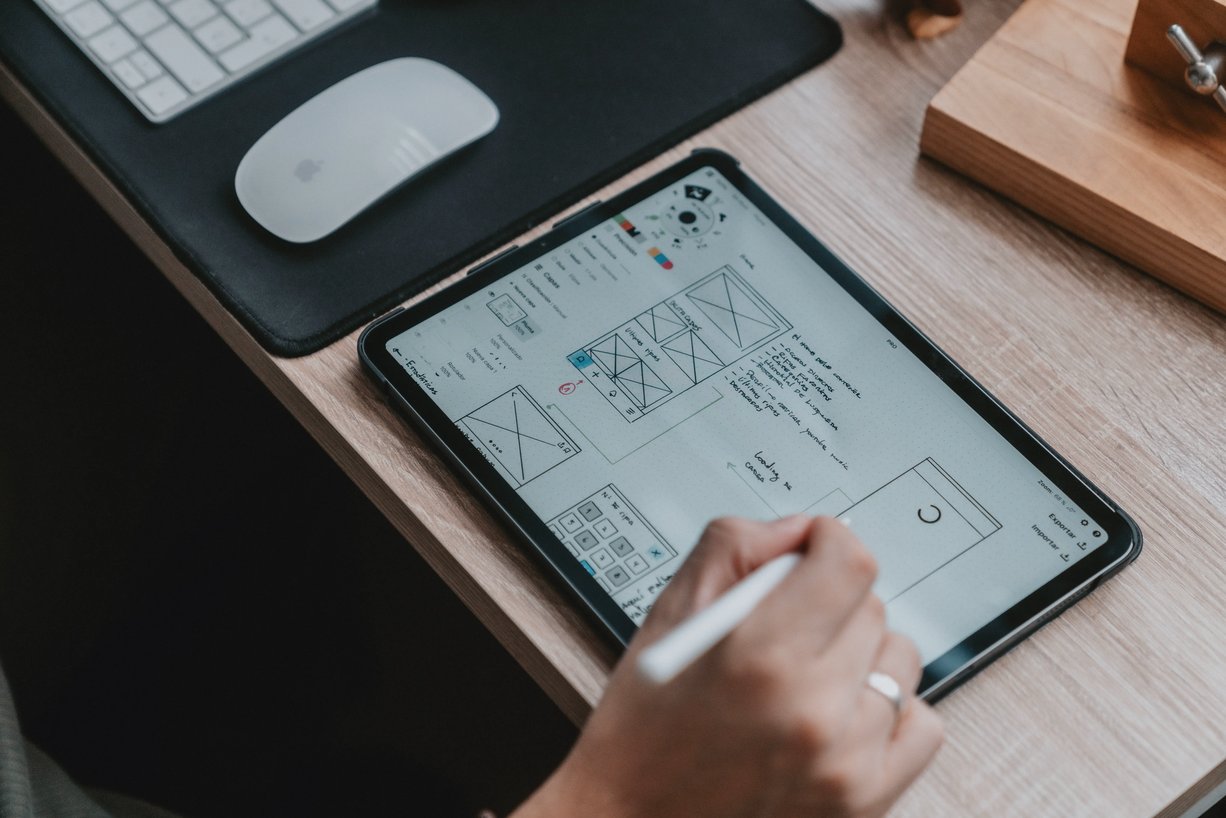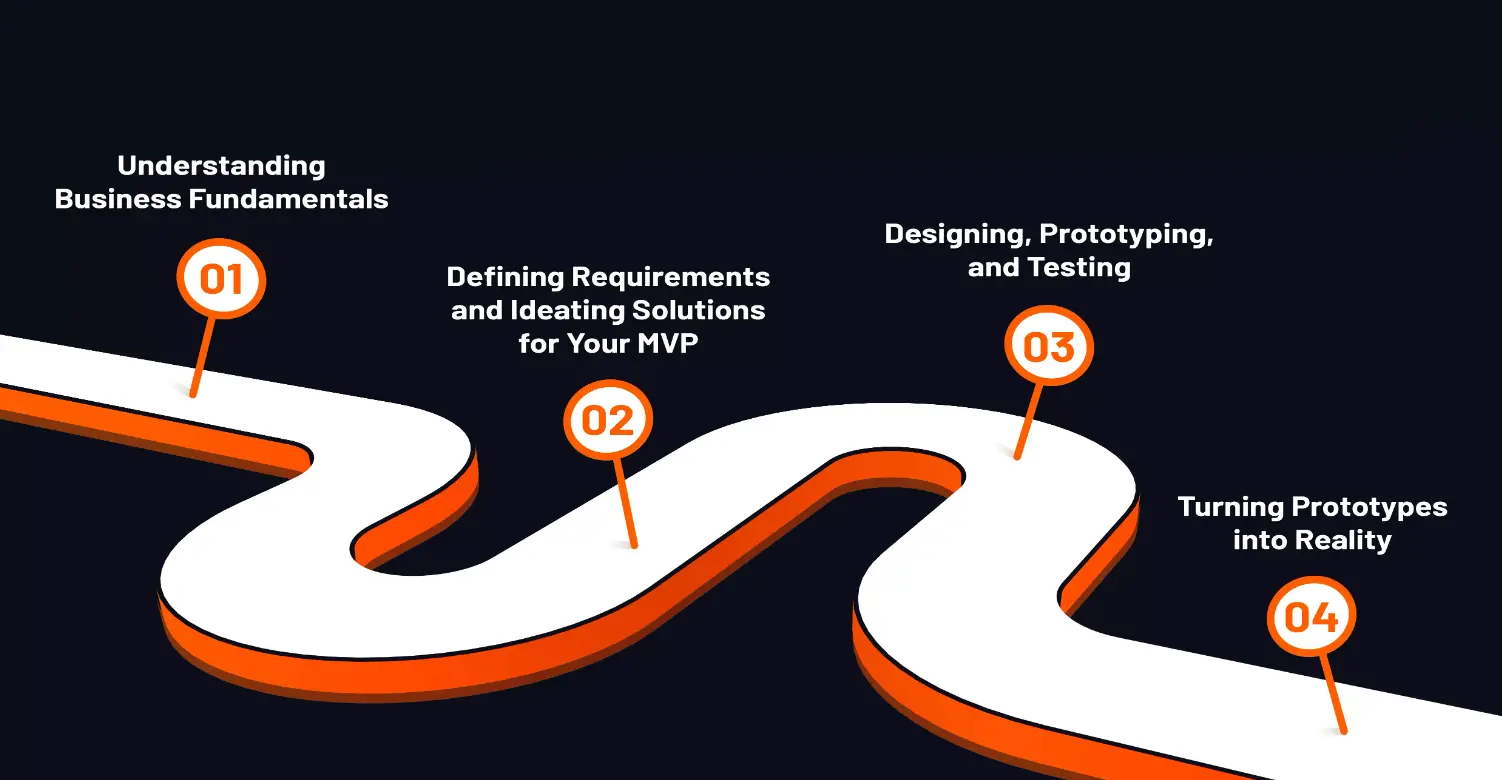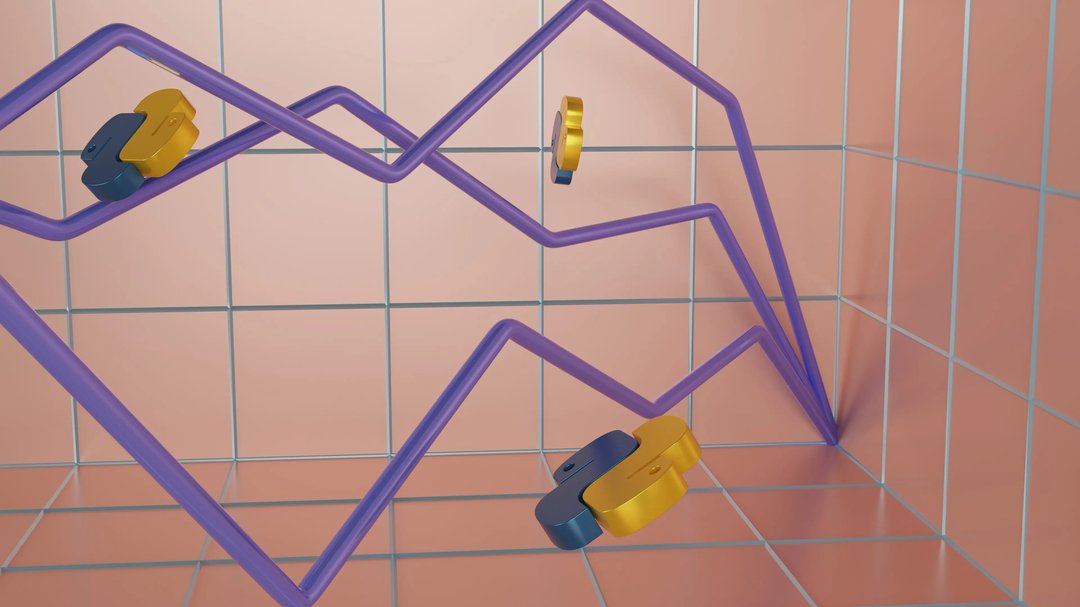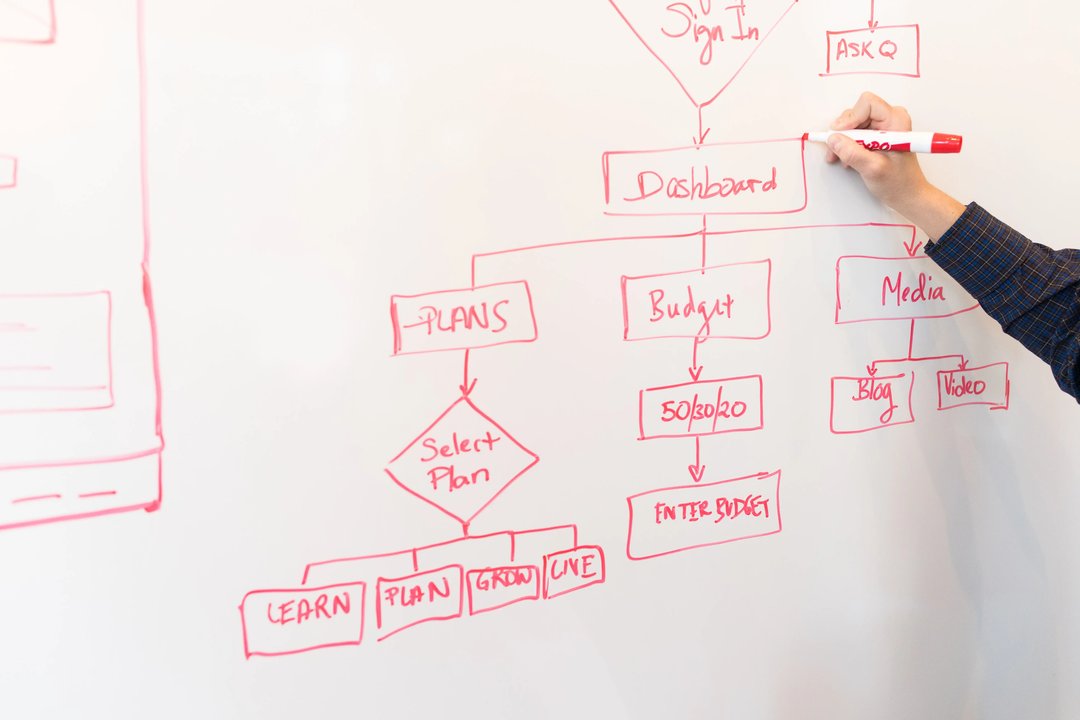
Maria Chojnowska
9 October 2023, 6 min read

What's inside
- What is the Product Design Process?
- A Roadmap for MVP Success
- Wrapping Up
- Ready to Build Your Next MVP?
Building a Minimum Viable Product (MVP) is the best step any startup founder can take if they’re looking to validate their business idea and build a successful product quickly.
But how do we approach MVP development? What are the best industry practices for developing an MVP that does its job?
At Sunscrapers, one of the proven tactics we use to help our clients in product development is the Product Design Process.
This article examines the Product Design Process to show you its value in MVP development or expanding existing digital products.
What is the Product Design Process?
Simply put, the Product Design Process is an essential part of the process a software development implements to help its product teams gather and define requirements and prototype and test the solution with end-users.
Thanks to its structure, we can control the future shape of the product or service we will build. Let’s take a closer look at each of its phases.
A Roadmap for MVP Success

Phase 1: Understanding Business Fundamentals
This stage aims to identify the client’s level of expertise and assess the consistency of their business fundamentals. It usually involves a Project Manager or Product Designer, with minimal team involvement.
a. Asking the Right Questions Early On
Questions we usually ask:
- Is the vision clear and consistent?
- Are the business objectives well-defined and realistic?
- Does the client know what they want from us?
- How well is the client prepared from the business standpoint? (business model and product strategy, competition?)
- What has been done until now? What can we use?
- What needs to be done? In which areas?
- What are the constraints regarding budget, time, and scope?
- What are the technological constraints and opportunities?
- How do other competitors position themselves in the market?
- Which customer needs do they address? Which problems do they solve, and how well are they doing it?
- What are the best practices in terms of industry standards?
- How do people solve the problem that the product aims to address?
Depending on the product’s complexity, this phase may take 1 to 3 days to complete. The key objective of this phase is to analyze the information provided by the client and gathered during the previous phase, in combination with research.
b. Crafting a Winning Product Strategy
This sub-phase can take the form of workshops if some areas need to be clarified first.
Questions we usually ask:
- Do we clearly define the value proposition?
- Do we have a well-defined segment, target group, and product positioning?
- Who do we need to partner with to deliver seamless user service?
- Do we know what the scope of the MVP quality level is?
- Who are the business & non-business stakeholders?
- How are we going to measure project success? How are we going to measure business success? How do we know that we are going in the right direction?
Read this too: Outsourced Product Development – or How to Build a Product without IT Expertise.
Phase 2: Defining Requirements and Ideating Solutions for Your MVP
During this phase, we gather the requirements and ideas about solutions. We begin to build a project backlog with functional and non-functional requirements. Also, this is when we start brainstorming the solutions that would cover the requirements.
Questions we usually ask:
- Which areas are well covered by requirements and ideas for the solutions?
- Which features are must-have?
- Which requirements are core for the value propositions?
- How many resources will they consume?
- Which solution delivers more business value?
- Which technologies can support the solution we want to build best?
- What constraints are around the platforms we want to build our solutions?
- Which areas are most critical for delivering the best user experience?
- How well does the solution cover a requirement? Is it hard to implement?
- Who are the projected users of the product? How, when, and why do they interact with each other?
- What are the common pain points and needs of our users? How can we map them?
- What is the minimum set of features that allows us to deliver a value proposition with a seamless experience?
- What did we miss previously? What do we need to go forward with the design?
- Which areas attract more risks, and how big are the risks? How can we mitigate them?
Phase 3: Designing, Prototyping, and Testing
This phase is usually divided into three sub-phases. Each aims to deliver a more granular picture of the end product.
a. Fast-Track to Feedback: The Role of Paper Prototyping in MVP Design
This sub-phase is dedicated to rapid prototyping and testing the solutions - and iterating based on the gathered feedback. It involves all of the stakeholders.
b. The Low-Fidelity Prototype: Paving the Way for User-Centric MVP Design
This is where the design team creates and presents a full system (application) for the first time. During the presentation, we cover all user scenarios for the MVP and show how they are reflected in system logic and user interface. After the presentation, we gather feedback. During this sub-phase, user testing is usually recommended.
c. Finalizing the Vision with a High-Fidelity Prototype: The Last Stop Before Development
The design team presents the final look and feel of the updated product. This is the final point from which its development starts.
A note about testing: There is only one best practice regarding tests. Test wherever you can! Having this in mind, together with the client, we can define what, when, and with whom we are going to test the design.
What’s next?
Phase 4: Turning Prototypes into Reality
Once the stakeholders accept the high-fidelity prototype, the team can develop the MVP.
But before developers set out to write the code, you might need to update the roadmap and product backlog. Once the product backlog is ready, the team can create a sprint backlog on its basis and commit to completing a given number of tasks during each sprint.
Get more insights in this article: Product Development Explained: Why Your Product Requires Different Models of Support in Each Lifecycle Stage.
Wrapping Up
Why the Product Design Process is Crucial for MVP Development Success?
The Product Design Process is a strategic roadmap for building a Minimum Viable Product, effectively eliminating risks at every stage—from concept to completion. It ensures that teams ask the right questions at the right moments, averting the common pitfalls of poor product-market fit.
In summary, embracing the Product Design Process is not just a best practice—it's a game-changer that significantly increases the likelihood of your MVP not only reaching the market but thriving in it.
Ready to Build Your Next MVP?
You've just read about the essential role of the Product Design Process in MVP development. Now, it's time to put that knowledge to practical use. If you're seeking expert guidance to navigate the complexities of MVP development, we're here to help.
At Sunscrapers, we specialize in assisting startups to turn their innovative ideas into successful products. Our dedicated team of developers, product managers, and designers are experienced in every phase of the Product Design Process. We're committed to eliminating risks and ensuring your MVP aligns perfectly with market needs.
Contact Sunscrapers for a Consultation.
Don't let questions or uncertainties hold you back. Let's build something great together.


